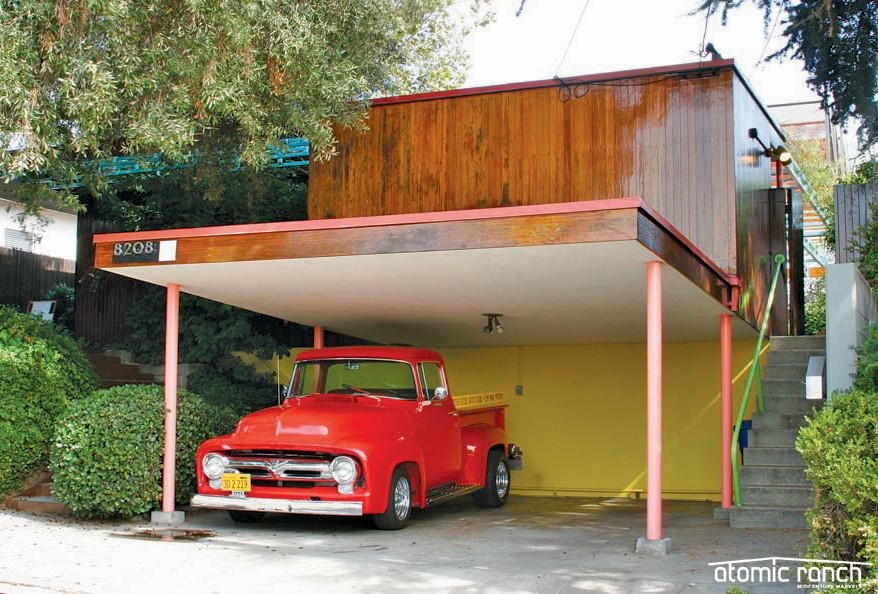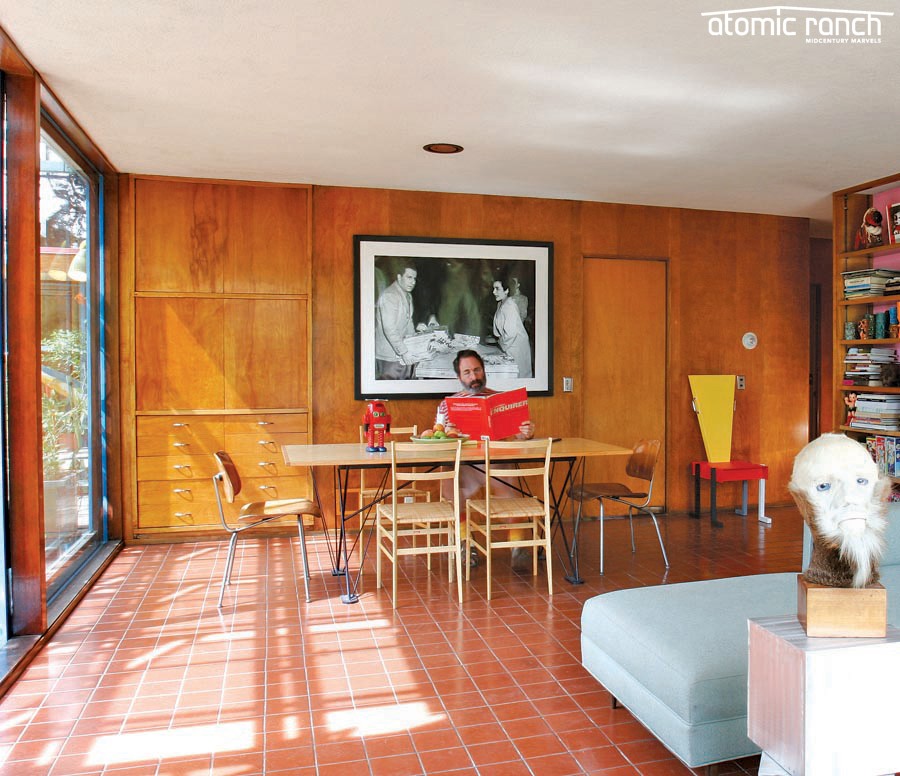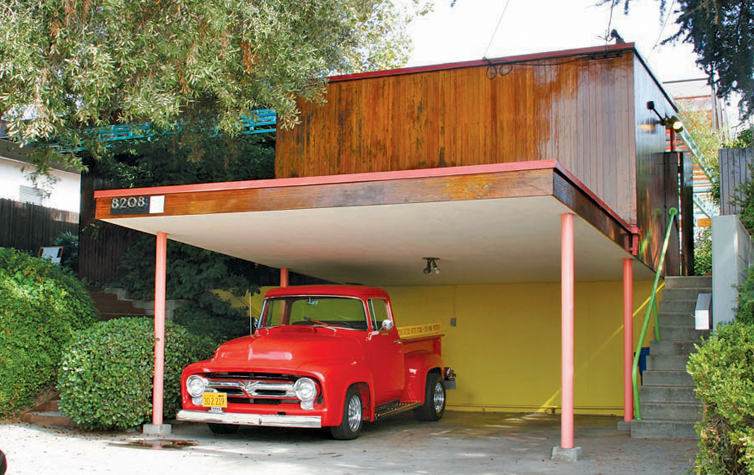
You could describe the Shire clan as a damn creative bunch: matriarch Barbara launched the Soap Plant, a store in Los Angeles similar to The Body Shop, on Sunset Avenue in the early ’70s. Son Billy expanded it into Wacko/Soap Plant in the late ’70s and moved it to Melrose. Ten years later, he opened La Luz de Jesus Gallery and then Billy Shire Fine Arts. Henry Shire, Barbara’s late husband, was a carpenter/contractor with an illustration degree from Pratt. And eldest son Peter crafts ceramics, sculptures and remains one of only two Americans involved with Memphis in the ’80s (the other being Michael Graves). From this illustrious stew of iconoclasts emerges a distinctive family house—both in 1950 when it was built and today, after a “refreshing” by Peter and Billy.
On a hillside lot in Echo Park near downtown Los Angeles, Henry Shire drew up the building plans and personally constructed the 1,400-square-foot home. Perched on a hilly lot, passing motorists glimpse little of the house save the carport. Designed by architect Josef van der Kar, with landscaping by Garrett Eckbo, the family house was home to the couple’s creative and political friends.
“Joe van der Kar was a modest guy,” says Peter Shire. “He and my parents were in the club that included Gregory Ain and other political radicals. They were full of the optimism of the 1930s when people were going for political change; politics was their touchstone.”

Peter remembers many communist meetings at the family house. “They were card-carrying members—the real deal. Dad’s was a carpenters’ group, and Mom’s was a neighborhood group. My friends’ mothers and fathers would come over every other month and give reports on world events and analyze them in Marxist terms—it was almost like a reading club,” he says. He also remembers his dad watching the House Un-American Activities Committee hearings for hours while he sketched the participants.
“When my parents were young, everyone in their circle talked about why they were involved in politics and progressive philosophies. It was about a better standard of living for everybody. They didn’t say a better ‘lifestyle,’” Peter continues. “Part of the Marxist deal was to not be materialistic and Mother believed in buying one good suit. It’s the idea of, instead of having three lawn sets from IKEA, having one lawn set from Knoll.”
Family House with Family Values
How did this philosophy play into the midcentury décor choices in the Shire family house? Find out in part 2, where we discover what designers made up the home’s furnishings.












